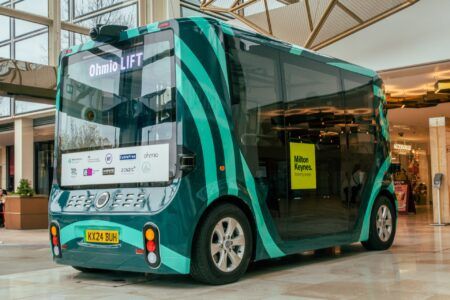British connected vehicle data firm Wejo has unveiled an AV prototype, which is being used to develop and demonstrate its Autonomous Vehicle Operating System (AV-OS) – software that will use live, real-time connected vehicle data to support development, testing, and operation of AVs for the future.
The AV prototype, DLIVEREE, will enable Wejo to build, test, and demonstrate its live API data powering AV development projects, including freight, delivery, and robo-taxi or ride-hailing vehicle use cases.
The company stressed that it is “not entering the race to develop autonomous vehicles, but it is working on propelling AV adoption forward.”
According to Wejo, DLIVEREE represents the next stage of evolution for AV-OS that will demonstrate how AV developers will be able to utilize connected car data that integrates real-time parameters, including the number of cars on the road, construction barriers, pedestrians crossing the street, cyclists, slippery roads, or other dangerous weather and road conditions.
The prototype will also support the standardization of a common connected vehicle language for AVs to communicate real-time road settings, vehicle status and inform digital twin testing.
“The prototype we are developing will demonstrate how Wejo’s AV-OS can empower AV developers by rapidly accelerating innovation to realize the full potential of AVs,” said Richard Barlow, founder and CEO of Wejo. “We want to help reduce the 1.3 million deaths that happen each year on the road and the additional eight million due to emissions.
“Instead of learning from historical data, our edge-based processing of live API data will provide intelligence on long-range conditions across traffic and roadways and democratizes access to live, real-time connected vehicle data, resulting in safe and efficient AV development – and truly autonomous AVs. We are ultimately supporting the creation of the most experienced driver on the road,” Barlow added.
With access to trillions of data points from more than 85 billion journeys and approximately 19 million vehicles that represent activities on 95% of roads in America, AV developers, DOTs, and fleet operators will be able to better understand current vehicles’ status and dynamics. This will include intended movements of vehicles (e.g., forthcoming lane change and exiting the highway) to make calculated instant decisions to maintain road safety alongside automated and non-automated vehicles on the road.





